Contact lenses are made from a variety of different materials. Each material has a unique set of benefits and downsides.
The material of a contact lens will also depend on the type of contact lens.
Types of Contact Lenses
In general, there are three broad classes of contact lenses.
Soft contact lenses are the lenses which are commonly used and are flexible when handled. These contact lenses can be used by children, adults, and anyone with simple refractive needs such as nearsightedness or farsightedness.
Rigid contact lenses are hard lenses that hold their shape on the eye. These contact lenses can be used to control nearsightedness in children, to correct vision, and in some cases of diseases of the eye.
Scleral contact lenses are large, hard contact lenses which vault over the cornea. These contact lenses are mostly used in cases of severe eye diseases or when other contact lenses have failed.
Soft Contact Lens Materials
Materials for soft contact lenses come in the largest variety of types. To simplify the categorization of these materials, there have been five groups created to unite materials which have similar characteristics.
Group One Soft Contact Lens Materials
Group one materials are considered low water content and non-ionic. These materials maintain their shape very well for a soft lens.
However, since these materials have a low water content, the contact lens does not allow oxygen to reach the cornea easily.
These lenses are best for short wear times and people who struggle to handle their lenses.
Group Two Soft Contact Lens Materials
Group two materials are considered high water content and non-ionic. These materials will maintain their shape less than those in group one but still more than others.
A benefit of this category of material is that it provides good oxygen transmission and is still easy to handle.
These lenses are a common choice for children as the lenses are relatively easy to handle but provide enough oxygen to the eyes for an entire day of wear.
Group Three Soft Contact Lens Materials
Group three materials are considered low water content and ionic. These materials are fairly uncommon in modern contact lenses as they do not provide significant benefits when compared to other groups of materials.
Group Four Soft Contact Lens Materials
Group four materials are considered high water content and ionic. These materials are thin and allow lots of oxygen transmission but can be more difficult to handle.
These lenses are often used for an experienced contact lens wearer or an older new contact lens patient. These materials are among the best for daily wear contact lenses.
Group Five Soft Contact Lens Materials
Group five materials are silicone hydrogel materials. These materials are quite different in their structure than the other four groups.
Silicone hydrogel materials have the highest oxygen transmission and are some of the thinnest lenses. This makes these materials the best selection for extended wear lenses, dry eye patients, and patients who have not been successful with other materials.
Rigid Contact Lenses
Rigid contact lenses do not have to allow the transmission of oxygen as the tears can go underneath the rigid lens.
Most lenses are made from a hard plastic and designed to not flex on the eyes.
Scleral Contact Lenses
Scleral contact lenses, like rigid contact lenses, do not allow oxygen to pass through the lens but rather, go underneath it.
Scleral contact lenses are made from a very firm plastic and are designed not to bend or adjust even when pressed upon.
What Contact Lens Material is Best for Me?
To determine the best contact lens material for you, it is important to talk to your optometrist about how you want to wear the contact lenses, what issues you may have, and anything that you feel could improve your contact lens experience.
With the right information, you and your optometrist can decide which material is best.
Our eye doctors at EyeDocs Family Eye Care in Brookville, OH excel in prescription of glasses, contact lenses and the diagnosis of a variety of eye diseases. Call our optometrists at 937-770-1265 or schedule an eye exam appointment online if you would like to be evaluated for which contact lens material is right for you. Our eye doctors, Dr. Kyle Maxam and Dr. Cara Wampler, provide the highest quality optometry services and eye exams in Brookville, Ohio.
You can schedule your next appointment with us online!
Connect With Us
Let’s continue the conversation over on your social network of choice.
facebooktwitterinstagram
Useful Links
Our Services
Useful Links
Our Services
430 Arlington Rd. Suite B | Brookville, OH 45309 | 937-770-1265


0 Comments